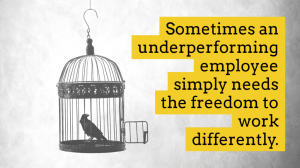The Bizarre Truth Behind Leadership Burnout in 2024
What exactly do you think about when you hear the phrase “Leadership Burnout”? Among the images that immediately come to mind are physical exhaustion, mental fog, and emotional drainage.
As a business owner, you are probably used to pulling yourself up and powering through. But how long can you go on like this before your health, business, or family suffers as a result?
According to 2020 and 2021 survey data from Gallup, “manager burnout is only getting worse.” Experts say late-stage pandemic fatigue is taking a toll on many managers and business leaders, with some veering towards feeling burned.
Among the many challenges that the pandemic brought on, The Great Resignation is perhaps one of the most significant one. Managing the day-to-day nuances of a remote workforce, while watching your best employees leave, is a recipe for stress and anxiety.
As a leader, you will feel the responsibility to serve, support with positivity, and have answers to all uncertainties. The pressure, isolation, and weight that come with being at the top can be overwhelming, making things appear hopeless and tough to handle. The burnout symptoms can include emotional exhaustion, detachment, loss of motivation, and reduced efficiency — all of which can have a ripple effect throughout an entire workplace.
Burned-out leaders become slow and indecisive when faced with important decisions. They feel much less confident in their choices. A low confidence level can lead to poor choices, missed opportunities, and lower employee engagement and morale.
What is Leadership Burnout?

Leadership is an active role; ‘lead’ is a verb. But the leader who tries to do it all is headed for burnout, and in a powerful hurry. – Bill Owens.
Leadership burnout is the feeling of physical and emotional exhaustion that senior managements and high-performing managers feel when they overburden themselves with too much work or neglect to spend time on their wellness techniques or can be caused by isolation.
There is a saying, “it’s lonely at the top.” In a wide-ranging interview in 2016, five years after taking over from Steve Jobs, Apple CEO Tim Cook spoke candidly about the challenges of running one of the world’s most iconic companies. “It’s sort of a lonely job,” he admitted.
The World Health Organization defines burnout as an occupational phenomenon in the International Classification of Diseases’ chapter on “factors influencing health status.” The WHO notes that burnout results from chronic workplace stress and that three dimensions characterize it:
- Energy depletion/exhaustion.
- Increasingly negative feelings toward the job.
- Reduced professional efficacy.
Burnout is what happens when you try to avoid being human for too long. – Michael Gungor.
Now, burnout has become a word that people throw around a lot these days. But, what does it mean?
Burnout is when your body says, “Enough, I am out.” Burnout is beyond just exhaustion; it’s not just “I am tired.” It’s more of “I have no mental stamina left..”
Development Dimensions International’s Global Leadership Forecast 2021 reveals that nearly 60% of leaders reported they feel used up at the end of the workday, which is a strong indicator of burnout.
Leadership burnout can occur when you experience long-term stress in your job or when you have worked in a draining role for a long time.
You can also experience burnout when your efforts at work have failed to produce the results that you expected, and you feel deeply disillusioned as a result.
Stress, uncertainty, and long hours can cause malaise among leaders too. If left unchecked long enough, it’s a condition that can manifest as exhaustion, disengagement, depression, and burnout.









